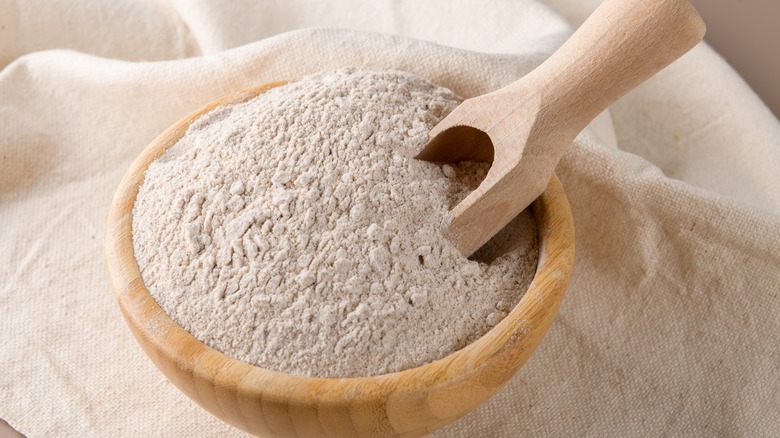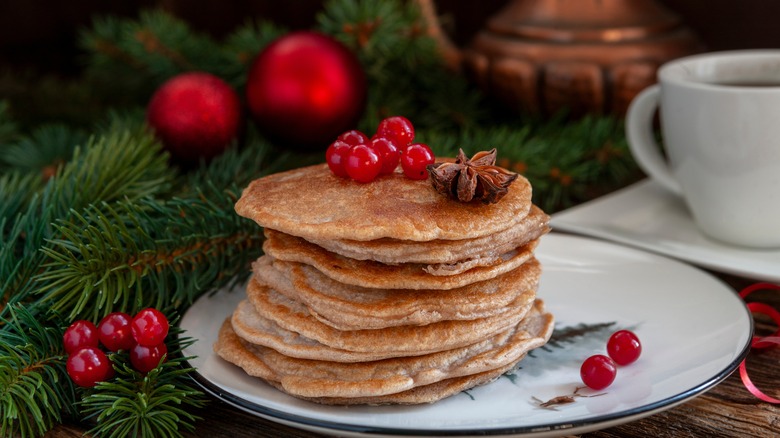Why Buckwheat Pancakes Are A Cornerstone Of West Virginian Cooking
Since 1938, the residents of Preston County in West Virginia gather together each September to celebrate all things buckwheat. The festival begins on the last Thursday of the month, and lasts through Sunday, ensuring residents and tourists have plenty of time to enjoy carnival rides, peruse wares sold by local artisans, and get a peek at the historic Hazelton Mill as it produces flour from the summer's buckwheat harvest.
Of course, the one experience you mustn't miss at Preston County's annual Buckwheat Festival are the buckwheat cakes. Though they closely resemble pancakes, West Virginia natives don't typically call them that, as they're much thinner and crisper than your classic buttermilk pancakes. These earthy, nutty, stick-to-your-ribs griddle cakes are usually served with bacon or sausage patties, butter, and maple syrup. However, apple butter or sausage gravy are also acceptable toppings (and incredibly delicious).
It may seem strange to celebrate something as humble as buckwheat, but West Virginians have an excellent reason for venerating this hardy crop as it's literally been a lifesaver for over 150 years. On June 5, 1859, a disastrous bout of unseasonably cold weather destroyed crops throughout the state's stretch of Appalachian Mountains. After that, farmers turned to hardy buckwheat to feed their families, celebrating their hard work and a bountiful buckwheat harvest each autumn. About 80 years later, those celebrations became formalized as the first Buckwheat Festival took place.
Buckwheat: a hardy, delicious crop for tough times
Besides offering a tasty and unique way to upgrade your pancakes, buckwheat offers significant advantages over wheat when it comes to farming and nutrition. Buckwheat survives fairly easily in nutrient-poor soil, is naturally pest-resistant, and requires little maintenance once it's planted. Planting is also pretty simple — just cast the seeds onto lightly raked soil, cover gently, and let them grow.
Buckwheat is also more nutrient-rich than wheat, likely because buckwheat groats are fruit seeds, not grains. This difference may also be why buckwheat flour tends to be heavier than wheat, similar to other nut and seed flours. While many people still prefer light, spongy, wheat-based baked goods, buckwheat was likely a welcome source of nutrition during harsh winters in the Appalachian Mountains. Logically speaking, dense, nutty buckwheat cakes probably curb the appetite much better than fluffy lemon ricotta pancakes (though both are pretty tasty).
If you decide to join in the celebration by experimenting with buckwheat flour at home, there are a few things to consider. Since buckwheat flour is naturally gluten-free, items made with it will be flat and dense, so we suggest starting off with things like crepes or even shortbread. However, buckwheat pairs beautifully with sweet and savory add-ins, easily supporting the astringent funk of strong cheeses and cured meats, or getting cozy with autumn spices, honey, and chocolate.

